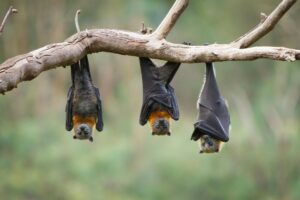
INDUSTRY TRENDS
Nature Inspired Play
November 28, 2018 | WRITTEN BY: Carmen
Written by: Jodi McCue, PLA, ASLA
It wasn’t until my son started kindergarten that I realized just how much play and parenting had changed since I was a child. Instead of hearing about a recess filled with imaginative free play and new experiences, I heard about a succinct style of supervision where kids were organized and shuffled between play zones at timed intervals. Structured play was heavily organized by the teacher or other adult, directing children to goals, often with learning outcomes in mind.
This was quite the opposite of my experience as a child. Growing up, I spent countless hours exploring the woods around my house by myself, playing in the stream getting wet and muddy, making pottery out of clay that I had dug up and uncovering animals along the way – often to the surprise of my mother. However, this isn’t the case for many children these days. More often than not, children have limited hours of unstructured play time due to their overprogrammed schedules and overall increase in use of technological devices. These factors, coupled with perceived dangers and changes in family and community structure, has lead playing outside until mom ‘rings the bell,’ to be a notion of the past.
“For ourselves, and for our planet, we must be both strong and strongly connected — with each other, with the earth. As children, we need time to wander, to be outside, to nibble on icicles, watch ants, to build with dirt and sticks in the hollow of the earth, to lie back and contemplate clouds….” – Gary Paul Nabhan & Stephen Trimble
Designers are seeing this trend with their own children and are including nature and natural elements into play space areas. A key example can be seen in playground manufacturers changing from bright primary colors to green and brown tones, incorporating rock walls and other natural elements into the design. Most importantly, it can be seen in the creation of natural environments specifically designated for play, or nature inspired play, at many parks.

In nature play, the “woods” or natural environment can be brought to children in a way that is comfortable to parents and kids. This can come in the form of water features, logs and stumps being used as balance beams, table and chair sets or stepping stones. The land itself can be shaped and contoured to create mounds and depressions that mimic natural features like hills and valleys. Low-lying areas can be converted to dry creek beds or water features with stepping stones.
For design guidance, in 2014, the National Wildlife Federation, US Forest Service and the Natural Learning Initiative at North Carolina State Design created National Guidelines for Nature Play and Learning Places. As these guidelines state, nature play is a “designated, managed location in an existing or modified outdoor environment where children of all ages and abilities play and learn by engaging with and manipulating diverse natural elements, materials, organisms, and habitats through sensory, fine motor, and gross motor skills.” Nature play can offer a low-cost alternative to typical playground equipment, as well as provide benefits not offered by common play structures. Nature play and learning spaces provide children the opportunity to have varying experiences in flexible play environments. These opportunities allow children to explore and “get dirty” while gaining confidence, interacting socially with their peers and disconnecting from technology in a natural environment.

Together, these elements can be linked with paths and child-sized spaces that adults can utilize, while providing them with the ability to chart their own course through the maze of play spaces. The Akron Zoo and Cleveland Metroparks Zoo do an exceptional job with the integration of nature play. Both zoos have designated spaces for kids to climb, build with sticks and get dirty.

At the Nature Center at Shaker Lakes, an outdated, outdoor gathering space was rejuvenated into a flexible classroom space, doubling as a nature play area. Surrounded by the woods and habitat, modular stone blocks have been arranged in a jigsaw like appearance to create seating that also serves as a place for children to play. While parents are near, the children can choose between using a quiet nook of the stones to read or gain confidence by learning to take risks, exploring the varying heights and spaces within the environment and jumping from platform to platform. Nature play offers parents and children the opportunity to be outside in the natural environment while providing flexible play spaces for children to develop their social and motor skills.
Do you have a vision for a nature play space? Environmental Design Group can help! Contact us today for more information.
RELATED TAGS:
[xyz-ips snippet=”comment-form”]




